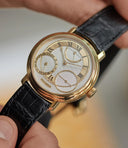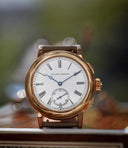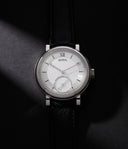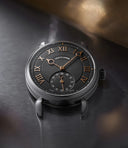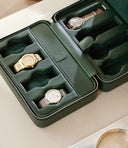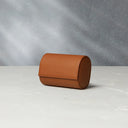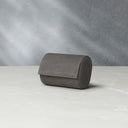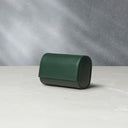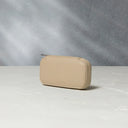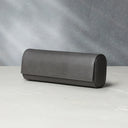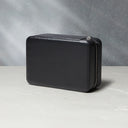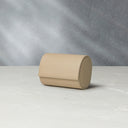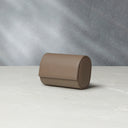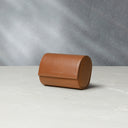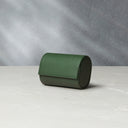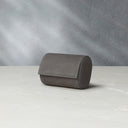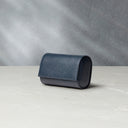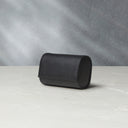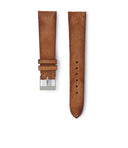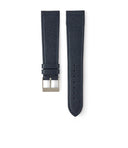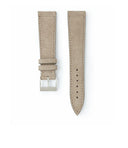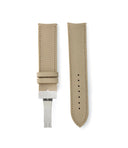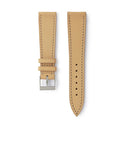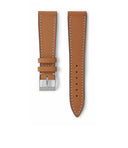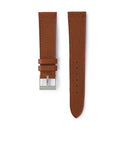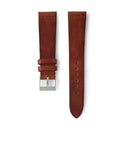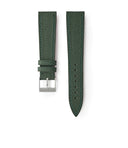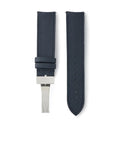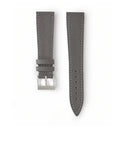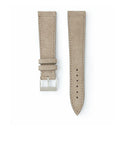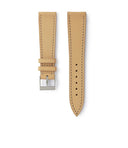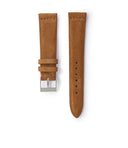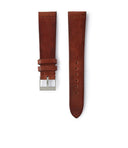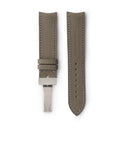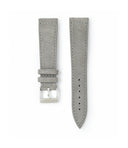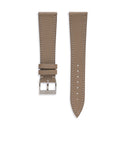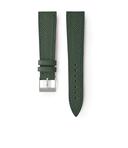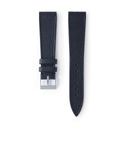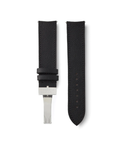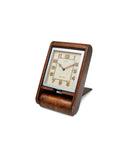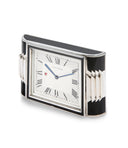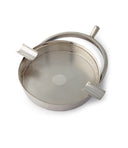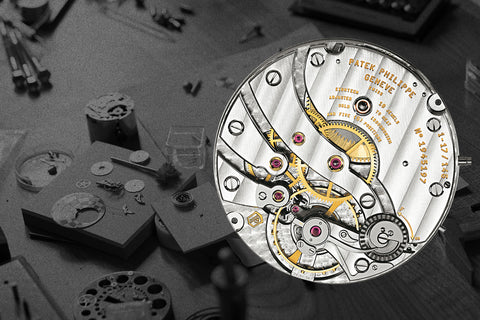When the Grönefeld brothers first revealed the One Hertz series in 2010 – with a movement centred around an independent deadbeat seconds function – it marked a first for watchmaking. While the feature is natural to calibres equipped with a constant force device, the deadbeat seconds – marked by the seconds hand moving in precise one-second increments – had become more obscure with the popularisation of quartz technology. The original deadbeat escapement goes back to 1675, when it was invented by Richard Towneley for use in regulator clocks at the Greenwich Observatory.
The One Hertz Classic comes early in the independent brand’s story, following the release of the Tourbillon Minute Repeater. It represented a simplification, expressing the time and power reserve and nothing more. However, it does this in a mechanically intriguing way. Notably, the Classic was offered in a limited series of just 30 pieces, with a polished and brushed grade 5 titanium case.
Grönefeld designed the optimal dial layout for the watch, with the architecture of the calibre following it. The deadbeat seconds, while marginally off-centre, occupies a central place on the watch face, with a smaller, overlapping register underneath expressing the time of day. The seconds register is framed by a raised silvered chapter ring, mirrored by the silvered ring on the main dial, with applied indices. Across the entirety of the dial, we see micro-guilloche finishing, creating an even texture and lending a more classic appearance to the otherwise modern design.
Meanwhile, the seconds register integrates the arc over which the 72 hours of reserve from the twin-barrels play out. Another two-position display lies below the time display. It relates to the push action of the signed and knurled crown. Pushing it to ‘S’ hacks the seconds and allows the wearer to set the time. Pressing the crown again toggles it to the ‘M’ position in which the wearer can replenish the manually wound calibre G-02. This is similar to the clutch mechanism found in a number of Richard Mille models made early on by Renaud et Papi.
The 43mm titanium case is 13.5mm high and has a three-part form. The multi-faceted bezel is high polished, as is the profile of the caseback. The midcase is horizontally satinated, with the finish extending to the profile of the stepped lugs. On top the lugs are high polished. They feature a slim facet, with their overall form tapering and curving down. In between the lugs the midcase is high polished. The lugs are 22mm apart and feature a bolstered black alligator-grained leather strap secured by a signed pin buckle. The bezel of the caseback is brushed, with two engravings detailing its Titanium designation and marking it as one of a series of 30. As expected of the material it is made from, the watch is surprisingly light despite its size.
Visible through the sapphire caseback is the calibre G-02. According to Bart Grönefeld, the parts for the One Hertz movements were machined at Renaud et Papi’s workshop and shipped to Grönefeld where they were finished. It features bridges made of stainless steel, rather than the brass most watchmakers find easier to work with. Grönefeld decided on stainless steel because the material lends itself better to the finishing details they had in mind. Formed like the gable roofs of houses in the Netherlands, the bridges feature a media blasted centre, with the raised edges satinated and finished with mirror-polished anglage. The visible pivot jewels are housed in gold chatons, while the screws are black polished. Each bridge requires up to ten hours of manual work.
The balance is free sprung and the movement beats at 21,600 vibrations per hour. The twin barrels each power a gear train that operate independently. The one on the western side of the calibre is responsible for the time display. Buried deeper in the calibre is the gear train, which advances the second hand in one-second increments, giving the watch its particular character. Such a separation of gear trains was necessary owing to the power intensive deadbeat seconds feature and was aimed at preserving the accuracy of the time display.






























































































